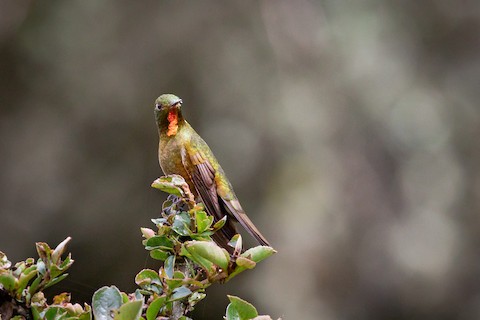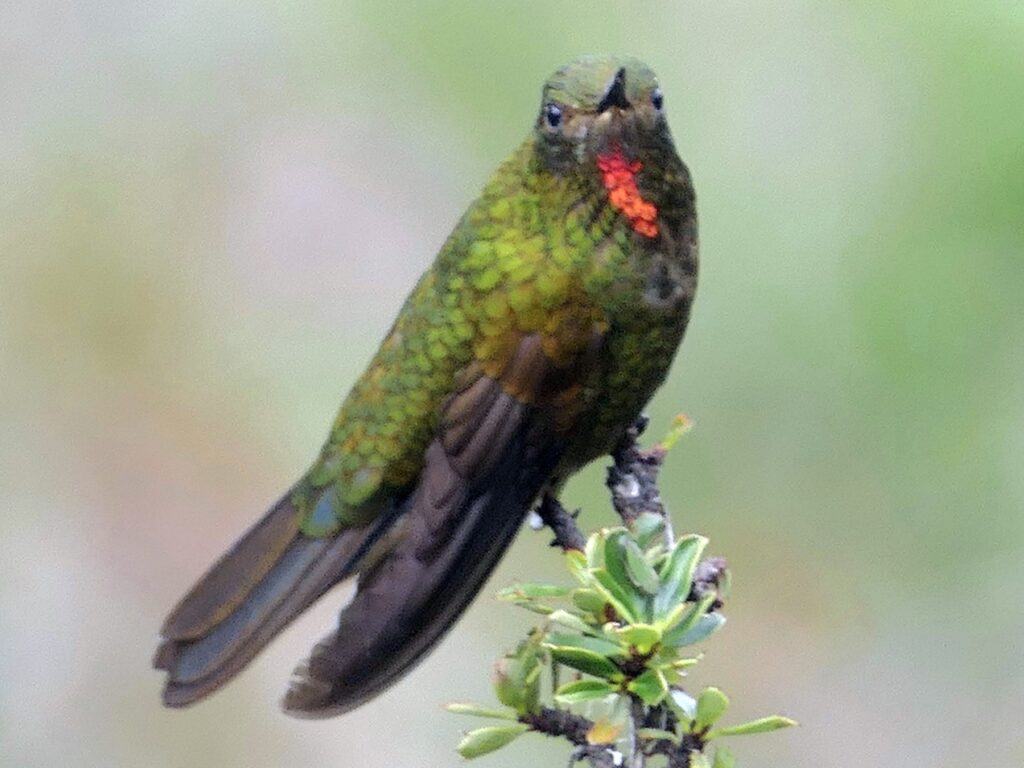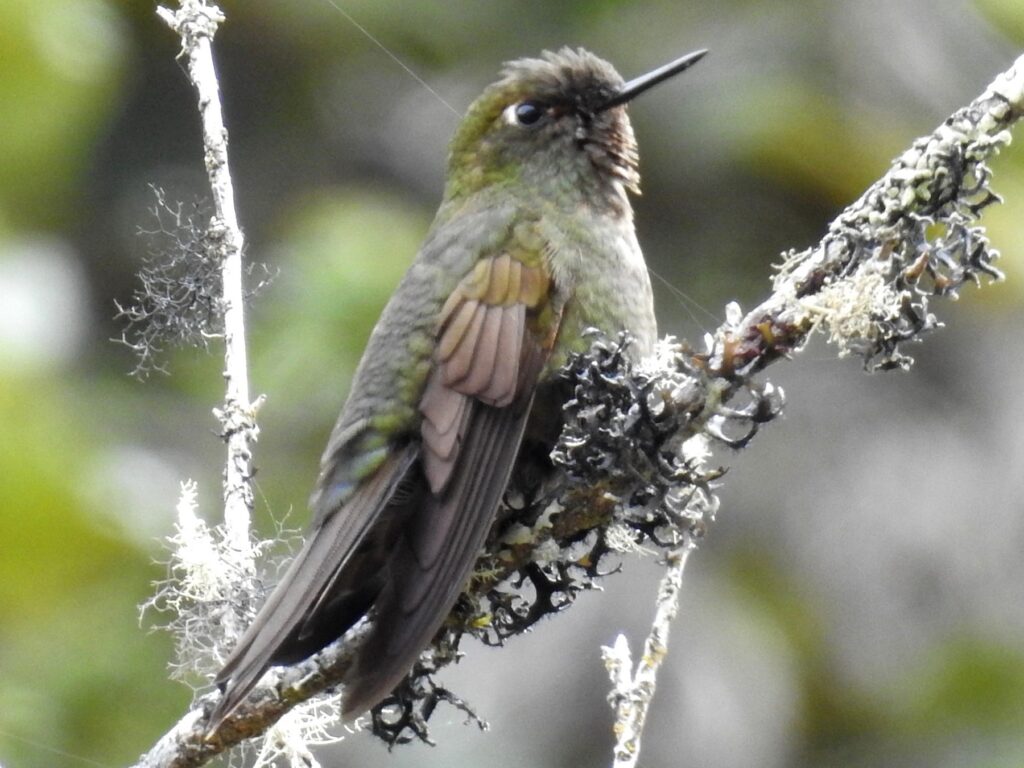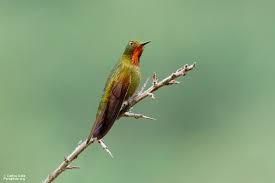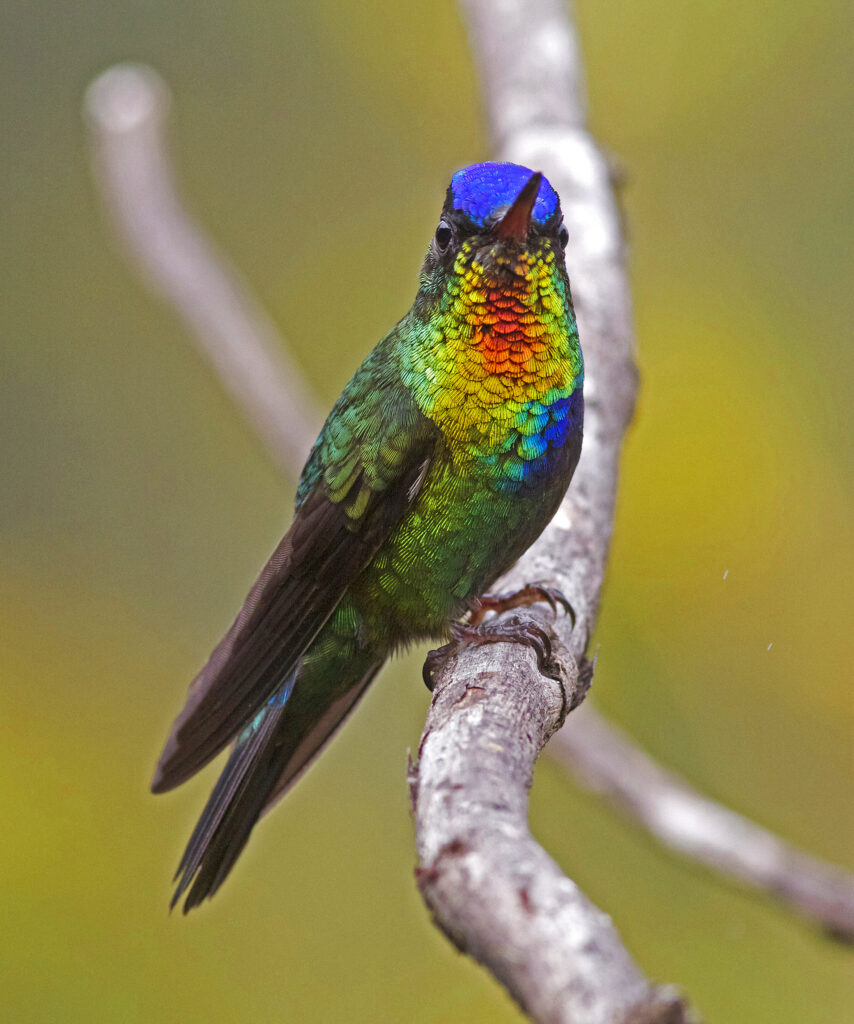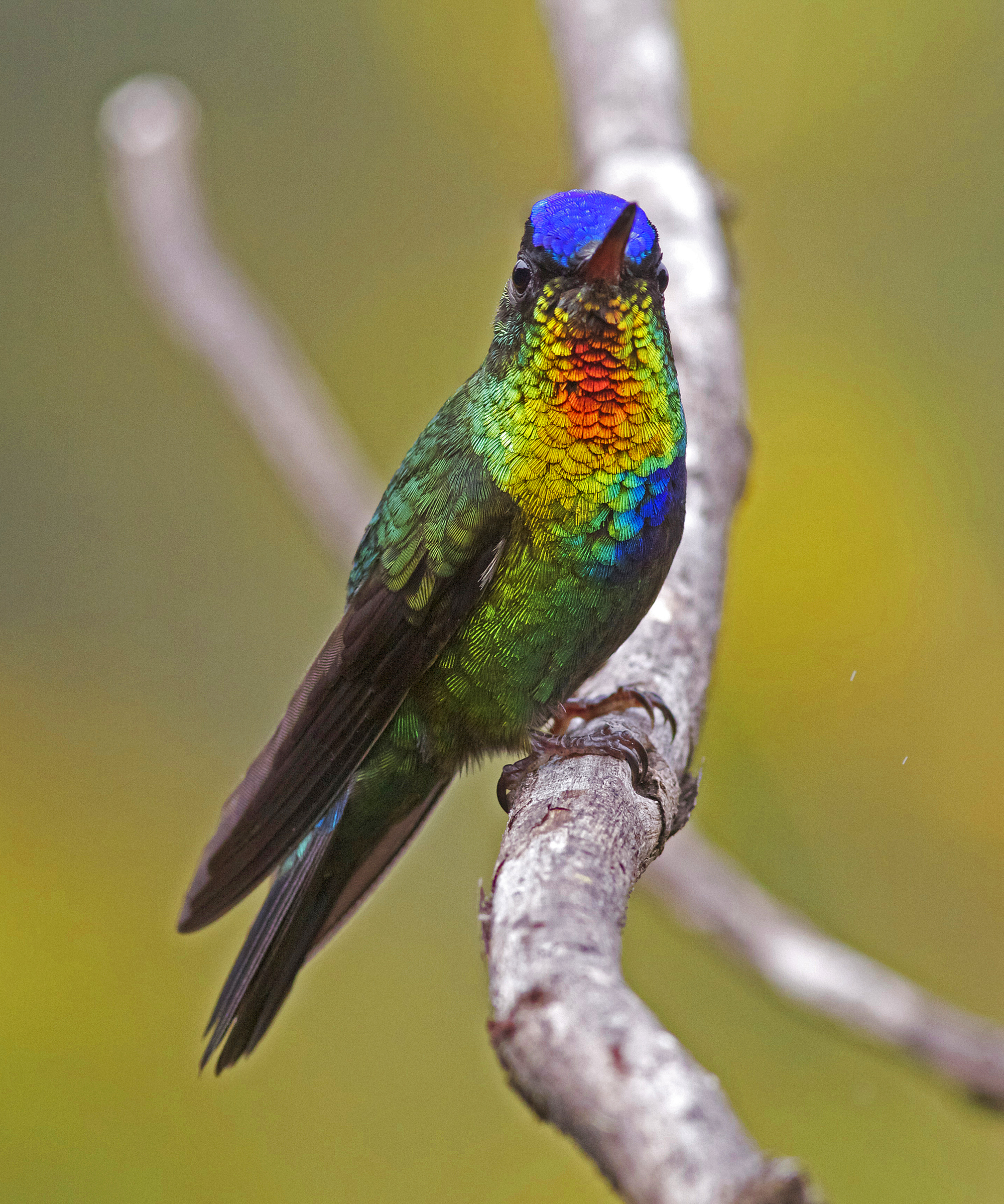Fire-throated Metaltail: Discovering the Vibrant Jewel of the Andes
The Fire-throated Metaltail is a remarkable bird, famous for its vibrant colors and unique features. Native to the mountainous regions of Central America, this bird stands out with its fiery throat and shimmering plumage.
Bird watchers and nature lovers go out of their way to spot this stunning species, hoping to catch a glimpse of its beauty and quirky behaviors in the wild. This bird thrives in high-altitude cloud forests, flitting among the foliage in search of food.
It mainly eats nectar from flowering plants, making it a key pollinator in these ecosystems. Photographers and ornithologists love the Fire-throated Metaltail for its vivid colors and playful antics.
Key Takeaways
- The Fire-throated Metaltail is famous for its bright colors, especially its fiery throat.
- You’ll typically find it in high-altitude cloud forests of Central America.
- This bird plays an important role in pollination and keeping its ecosystem in balance.
Taxonomy and Classification
The Fire-throated Metaltail, or Metallura eupogon, sits within the Trochilidae family. Let’s look at how it connects to other hummingbirds and what makes it stand out from similar metaltails.
Metallura Eupogon Overview
Metallura eupogon belongs to the genus Metallura, which includes several species of metaltail hummingbirds. This genus mostly lives in high-altitude regions of South America.
The Fire-throated Metaltail is easy to spot thanks to its fiery throat, which really sets it apart from its neighbors. It’s built to survive in cool, mountainous areas, especially in Peru. This bird feeds on nectar from high-altitude flowers and zips around with impressive agility.
Relation to Hummingbird Family
The Fire-throated Metaltail is part of Trochilidae, the hummingbird family. Hummingbirds are famous for their small size, incredible flying skills, and rapid wingbeats. Within Trochilidae, the Metallura genus stands out for its high-altitude adaptations. Every species, including the Fire-throated Metaltail, helps keep their ecosystems in balance by pollinating plants.
Distinction from Other Metaltails
You can tell the Fire-throated Metaltail apart from other metaltails by its unique colors and calls. Unlike the Scaled Metaltail (M. aeneocauda), which has more muted tones, the Fire-throated Metaltail flashes vibrant throat feathers.
It also sticks to specific regions, usually where certain flowers grow that fit its diet. This narrow habitat preference adds to the challenges of conserving the species. Want to dig deeper? Check out this article on strong diversification at the treeline for more about the Metallura genus.
Physical Description and Key Features
The Fire-throated Metaltail, sometimes called the Fiery-throated Metaltail, is a real showstopper with some very distinct features.
Plumage and Coloration
This bird’s plumage is vibrant and hard to miss. Its fiery orange throat pops against an iridescent green body, while the wings shimmer with a metallic sheen in sunlight.
The underparts are mostly gray, which balances out the splashy colors above. Long, tapered tail feathers show off blue and green hues, adding drama to its look. These bold colors aren’t just for show—they play a role in mating rituals, too.
Size and Structure
The Fire-throated Metaltail is medium-sized, usually about 17 to 19 centimeters long. It’s got a sturdy body and a strong, pointed bill made for sipping nectar.
Long, pointed wings help it dart quickly through mountain habitats. Short but tough legs let it perch on flowers while feeding. Its build is perfect for life at high altitudes.
Vocalizations and Behaviors
This species has a pretty wide vocal range, often breaking out into melodious calls. They use these sounds to attract mates or mark their territory. Fire-throated Metaltails stay busy, hovering around flowers and showing off their acrobatic moves while feeding.
They often hang out in small groups during feeding, and their interactions can be fun to watch. If you’re curious, there are plenty of detailed descriptions out there about their appearance and favorite habitats.
Range and Natural Habitat
The Fire-throated Metaltail doesn’t just live anywhere—it picks its spots carefully. Knowing where it hangs out and what it needs helps with conservation.
Geographic Distribution in Peru
You’ll mostly find the Fire-throated Metaltail in the high Andes of northern Peru. Its range stretches along the eastern slopes of the Andes at elevations between 3,000 and 4,500 meters.
It prefers spots packed with flowering plants—essential for its nectar-heavy diet. Places like Cajamarca and San Martín have good populations of these birds.
Preferred Tropical and Subtropical Regions
This hummingbird likes both tropical and subtropical areas. It usually sticks to cloud forests and other moist mountain habitats loaded with nectar-rich flowers.
These places are humid and have steady weather, which suits the bird just fine. It also spends time in shrubland and grasslands full of flowers.
Adaptation to Elevation
The Fire-throated Metaltail has some cool tricks for surviving up high. It’s got a bigger lung capacity and a super-efficient metabolism to deal with the thin air.
Flying and feeding at these heights takes more than just muscle; the bird also changes its behavior to match the environment. It targets flowers that bloom in cooler temperatures, and its feathers help keep it warm. Without these adaptations, it couldn’t make it in the chilly Andes.
Behavior and Ecology
The Fire-throated Metaltail has some fascinating habits and plays a big part in its ecosystem.
Feeding Habits
Mostly, it feeds on nectar from various flowers, using its long tongue to reach deep inside blooms. You’ll often spot it in high-altitude gardens or wildflower meadows. Its bright feathers make it easy to spot while it’s feeding. Sometimes, it’ll eat small insects for extra protein, especially when it needs more energy in breeding season.
Breeding and Reproduction
During breeding season, the male puts on a show, flashing his throat and zipping around to impress females. They nest in hidden spots among thick plants; the female builds the nest using plant fibers and spider silk.
She usually lays two eggs and handles incubation for about two weeks. After the chicks hatch, both parents bring them nectar and insects.
Role in the Ecosystem
Fire-throated Metaltails play a key role in pollination—while feeding, they move pollen from flower to flower.
Lots of plants rely on hummingbirds like this for reproduction. Seeing these birds around often means the ecosystem is healthy. Their lively behavior and bold colors attract birdwatchers, which helps ecotourism in their home regions.
Frequently Asked Questions
The Fire-throated Metaltail stands out among hummingbirds for its looks and its specific needs.
What are the primary characteristics of a Fire-throated Metaltail?
This bird has vibrant plumage and a dazzling orange throat. Its wings are long and pointed, which lets it fly with agility. It measures about 10 to 12 centimeters long, and males and females look a bit different in color and size.
Which habitats are crucial for the conservation of the Fire-throated Metaltail species?
This species really thrives up in high-altitude cloud forests and those wild paramo ecosystems. These places give them what they need for nesting and feeding.
Without these habitats, honestly, it’s tough to imagine healthy populations of the Fire-throated Metaltail sticking around.
What does the diet of a Fire-throated Metaltail consist of?
They’re mostly after nectar from all sorts of flowering plants. When they need some extra protein—especially during breeding—they’ll go after small insects too.
Watching them hover and dart between flowers, you can’t help but notice their agility. It’s a bit mesmerizing, honestly.
How does the Fire-throated Metaltail differ from its close relatives, like the Coppery Metaltail?
Sure, they’re related, but the Fire-throated Metaltail shows off this striking orange throat. The Coppery Metaltail? Its colors are way more subdued.
They also don’t hang out in exactly the same habitats, which ends up shaping how they feed and breed. Little differences, but they add up.
What are the breeding habits of the Fire-throated Metaltail?
They tend to breed when the rainy season kicks in. Females get busy building nests tucked into dense vegetation, usually grabbing moss and lichen to help the nest blend in.
The female stays on the eggs, keeping them warm, while the male hangs around to defend the territory. Not a bad division of labor, if you ask me.
What are the main threats facing the population of Fire-throated Metaltails?
Deforestation and climate change hit this species hard. Their habitats keep shrinking, which puts a lot of pressure on the population.
Honestly, if we want them to stick around, we’ve got to protect what’s left of their natural environment.
